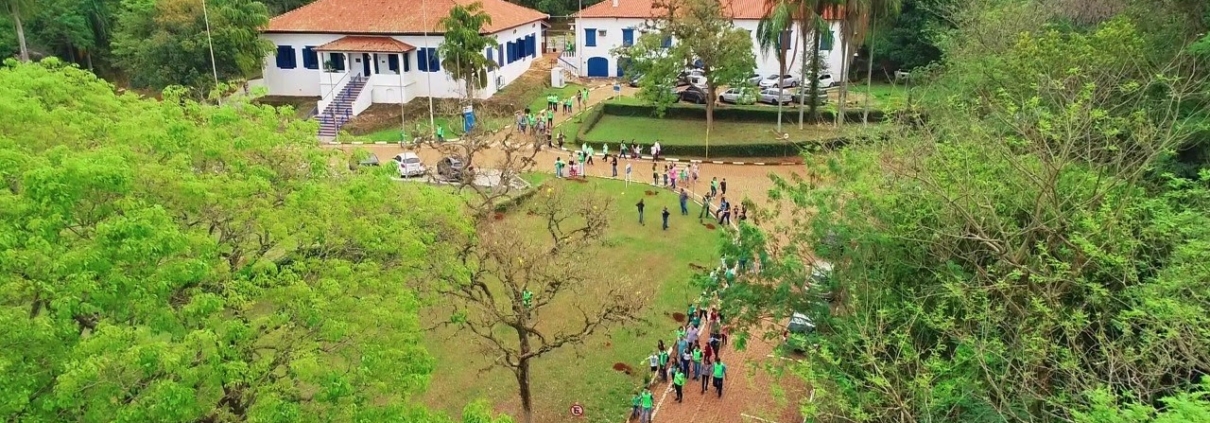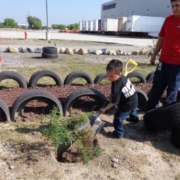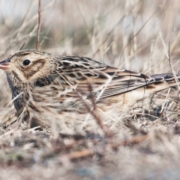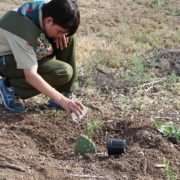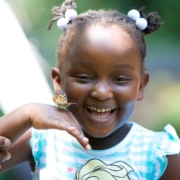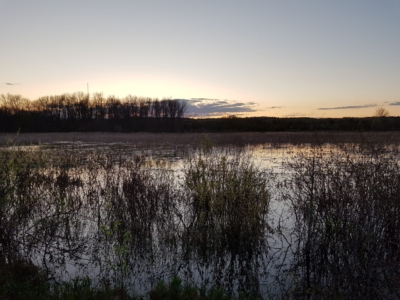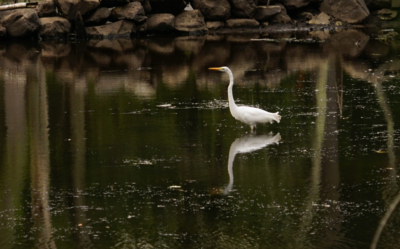Solvay | Restoring the Forest and Educating the Community
Solvay’s Paulínia site, located just outside São Paulo, Brazil, sits on 16 million square meters of land, with the industrial area covering about 15% of this site. The industrial complex is Solvay’s largest site in Latin America, with close to 30 factories producing solvents, silica, polyamide intermediates and more. This site is nestled in the Atlantic Forest biome, alongside two rivers and a variety of native flora and fauna that the Paulínia team is focused on preserving.
Rain and deforestation eroded the banks along the neighboring Anhumas River and left the riparian forest in need of restoration. Starting in 2013, the site team worked to recover six areas along the river by allowing native vegetation to repopulate and mitigating soil erosion with a hexagonal mesh structure called a reno mattress. The team has also worked to restore the surrounding forest by going beyond governmental regulations. Through the planting and management of 34,000 seedlings, the reforestation team plans to have restoration completed in 15 years instead of the legally mandated 20. In addition, they are planting only native trees, as opposed to the 50% native species mandated by law.
Because of the sheer size of the site, completing a species inventory initially proved challenging.
“We applied a sampling approach and counted with the help of our employees,” explained Senior Sustainability and Innovation Manager Ronia Oisiovici. “We are a chemical company, so we were surprised that one of our colleagues was a biologist. He helped us a lot with the identification of the species.” By relying on the knowledge of colleagues, the team was able to catalogue 83 species of birds, mammals, fish, amphibians and reptiles, including several endangered species like the maned wolf and mountain lion.
But habitat and species conservation are not the only areas of focus at Paulínia — community involvement and education are also key components. Started in 1995, the Open Doors project provides opportunities for over 1,200 students, employees and community members per year to learn about conservation, sustainability and the native species that live around them. Through tours of the industrial plant and the surrounding habitats, Open Doors participants learn about the biochemical work done at the plant as well as the wildlife that inhabit the area – with capybara sightings often a spontaneous part of the tour. In addition to the lectures and tours, Paulínia staff hold an Environment Day event each June that aims to educate young people about conservation through fun activities like games, painting and tree plantings.
Students also get involved at the Paulínia site through the Inovar program, a mentorship and training opportunity for students at two nearby public schools. Students work on low-cost projects like waste treatment, disposable menstrual pads, phytoremediation and more under the guidance and supervision of Solvay employees. These connections help students learn not only about sustainability strategies but also about professional practices. In fact, some students who participated in the program have even gone on to intern at Solvay.
While their projects span a variety of habitats and goals, the Solvay Paulínia team sees them as intertwined.
“Having organized all the projects and conservation activities under the umbrella of a well-structured Conservation Program allowed us to understand more about the important interconnection among the projects, to communicate better and to engage more our employees on our conservation journey,” said Oisiovici. “Thinking about big conservation projects is good,” she went on, “but small conservation actions are always very welcomed. The most important thing is to start positively acting for nature conservation. Once you start, you will have the opportunity to learn, to improve and to be able to have a greater conservation impact. This is a journey, not a project.”
Related Content:
Blogs:
- Mainstreaming Biodiversity: Challenges and Opportunities — A WHC Connect Recap
- Back to School: Partnering with Local Schools to Strengthen Your Certification Program
- Guest Blog: Making the Case for Investing in Trees
- A Hands-On Approach to Building the STEM Workforce of Tomorrow
Webinars:
- Best Practices for Education Programming at Corporate Sites
- Measuring the Success of Your Conservation Education Projects
- Wetland Habitats: Identification Monitoring and Use as Outdoor Classrooms
Project Guidances:
White Papers:
- Enhancing Habitat Connectivity Through Corporate Conservation
- Corporate Citizenship and STEM Education
Quick Facts
| Site Name: | Paulínia Site |
|---|---|
| Category: | Member Spotlight |
| Tags: | Awareness and Community Engagement, forest, training, wetlands |
| Site Location: | São Paulo, Brazil |
| Partners: | Alquimia Jovem, Escola Técnica de Paulínia (ETEP), Escola Técnica Estadual Conselheiro Antônio Prado (ETECAP), Instituto Rhodia, PCJ Consortium |
| Project Types: | Education and Awareness, Forests, Wetlands and Water Bodies |
| Certification Since: | 2021 |
| WHC Index Link: | Learn more about this program |
